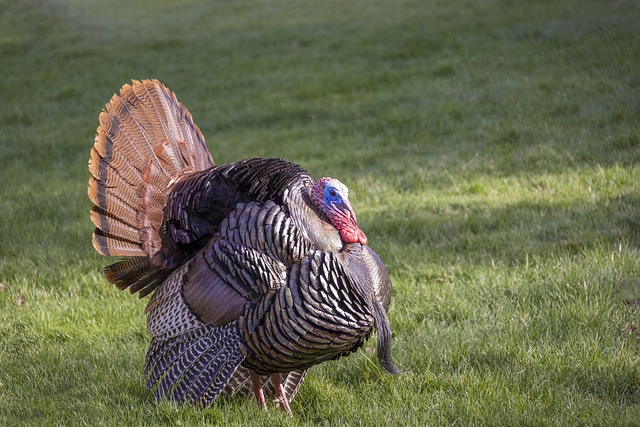How to Setup Turkey Decoys for Hunting: Expert Techniques and Tips

When it comes to turkey hunting, setting up decoys strategically can be a game changer. Decoys are designed to draw turkeys in close for a clean shot, but they can be complicated to get right. Learning how to set them up effectively is essential to a successful hunt, and this article will provide helpful tips on how to accomplish that.
First, choosing the right decoy types and positioning them correctly can mean the difference between a bountiful harvest and a disappointing trip. By taking into account factors like the time of the season, weather conditions, and the terrain of the hunting grounds, hunters can work to make their decoy setup as convincing as possible.
To master the art of decoy setup, we’ll discuss the importance of visibility, turkey behavior, and key aspects of decoy placement. With a strong grasp on these topics, hunters will be well on their way to crafting the most alluring decoy layouts in the woods.
Understanding Turkey Behavior
Before setting up turkey decoys for hunting, it’s essential to gain an understanding of turkey behavior. This knowledge will help hunters create a realistic and effective decoy setup that will increase their chances of success during a turkey hunt.
Turkeys are social birds, and their behavior patterns are centered around their need to establish hierarchy and mate. During the spring mating season, gobblers (male turkeys) become more aggressive and territorial. They’ll strut, gobble, and fan their tail feathers to attract hens (female turkeys) and establish dominance over other gobblers. Conversely, hens become more vocal and receptive to mating during this season, and they’ll respond to gobblers’ displays with calls and body language.
To better understand turkeys, consider the following behavioral aspects:
- Gobbler behavior: Gobblers engage in aggressive displays such as strutting and gobbling in order to establish dominance and attract females. They’ll often move toward what they perceive as another gobbler or hen, making them easier to decoy than hens.
- Hen behavior: Hens are more cautious and less likely to approach a decoy without good reason. When setting up hen decoys, consider using a feeding or resting posture to create a more natural and non-threatening scene.
- Submissive behavior: Younger or less dominant turkeys often exhibit submissive behavior, especially around more dominant birds. Positioning a submissive decoy can help attract dominant gobblers and create a more realistic scenario.
Keep in mind that turkeys also have a keen sense of sight and hearing, meaning that hunters need to be cautious and conceal themselves properly while setting up and waiting near turkey decoys.
In addition to behavior, it’s important to understand the terrain and habitat preferences of turkeys. Typical turkey habitat includes:
- Hardwood forests
- Mixed pine and hardwood forests
- Pastures and agricultural fields
- River bottoms and wetlands
Selecting a decoy site within the preferred turkey habitat will increase the likelihood of encountering turkeys and improve the overall decoy setup.
In summary, understanding turkey behavior, habitat preferences, and using the terrain to your advantage will play a significant role in creating a successful turkey decoy setup. Arming oneself with this knowledge will equip hunters with the tools necessary for a more fruitful and exciting turkey hunting experience.
Decoy Placement Strategies
Proper decoy placement plays a crucial role in successful turkey hunting. By utilizing various strategies, hunters can significantly improve their chances of attracting a gobbler into shooting range. In this section, we’ll discuss several decoy placement strategies that’ll help maximize your turkey hunting experience.
One important consideration to keep in mind is the visibility of the decoys. Position them in open areas where they’re noticeable from a long distance, such as fields, meadows, and clearings. This increases the likelihood of a turkey being attracted to your setup. Some key points to consider:
- Set up the decoys within effective shooting range to increase the probability of a successful hunt.
- Create a natural-looking scene by positioning decoys in groups, mimicking social behavior among turkeys.
- Use a mix of different decoy types, including feeders, lookers, and breeding pairs.
Another essential strategy is decoy spacing. Try not to overcrowd your decoys; instead, provide enough space for a dominant tom to approach without feeling threatened. Here are some spacing tips:
- Keep decoys at least 10-20 yards apart to avoid an intimidating setup.
- If possible, use decoys with adjustable body positions so the approaching tom can see all of them.
- For jake or tom decoys, place them at a greater distance from the hunter, luring a dominant bird past the shooting range.
Wind direction also impacts decoy placement. Setting up decoys in such a way that they move naturally in the wind, imitating the movement of a live turkey, can be quite effective in attracting gobblers. Some wind-related strategies include:
- Position decoys so that the wind blows from your back toward the decoys, encouraging approaching gobblers to face the wind.
- Rotate decoy stakes to allow for more movement, making the scene more realistic.
Lastly, it’s crucial to evaluate and adjust your decoy strategies based on the results. Pay attention to how turkeys respond to different setups and adjust accordingly. If a particular strategy isn’t working, don’t hesitate to try another one.
By following these decoy placement strategies, you’ll be well-prepared to bring a longbeard into range and improve your chances of a successful hunt. Remember to remain patient, flexible, and always adhere to your region’s hunting regulations.
Conclusion: Mastering Decoy Setup
Mastering the art of setting up turkey decoys for hunting significantly increases the chances of a successful hunt. With practice and patience, any hunter can develop the skills needed to position decoys for optimal effect.
One of the primary factors to consider is choosing the right decoy types. Here are some essential types of turkey decoys:
- Hen decoys
- Jake decoys
- Strutting Tom decoys
Using a mix of these decoys creates a more realistic and appealing scene for incoming turkeys.
Another critical aspect of decoy setup is the positioning. It’s essential to:
- Face decoys toward the hunter
- Place decoys in visible and open areas
- Maintain suitable spacing between decoys and the hunting blind
Setup strategies may vary depending on the hunting location and available cover. Experimenting with different configurations helps to determine which works best for specific situations.
When it comes to real-life turkey behavior, it’s important to remember that:
- Toms are dominant and want to attract hens
- Jakes may attempt to challenge Toms for hens’ attention
- Hens are attracted to both Toms and Jakes but will lean more toward the dominant Toms
Mimicking these behaviors with decoys can effectively pique the curiosity of nearby birds and entice them to come closer.
In essence, hunters who take the time to study and understand turkey behavior will find it easier to set up and use decoys effectively. By mastering decoy setup, one can enjoy more fruitful hunts and exciting experiences in the great outdoors.
